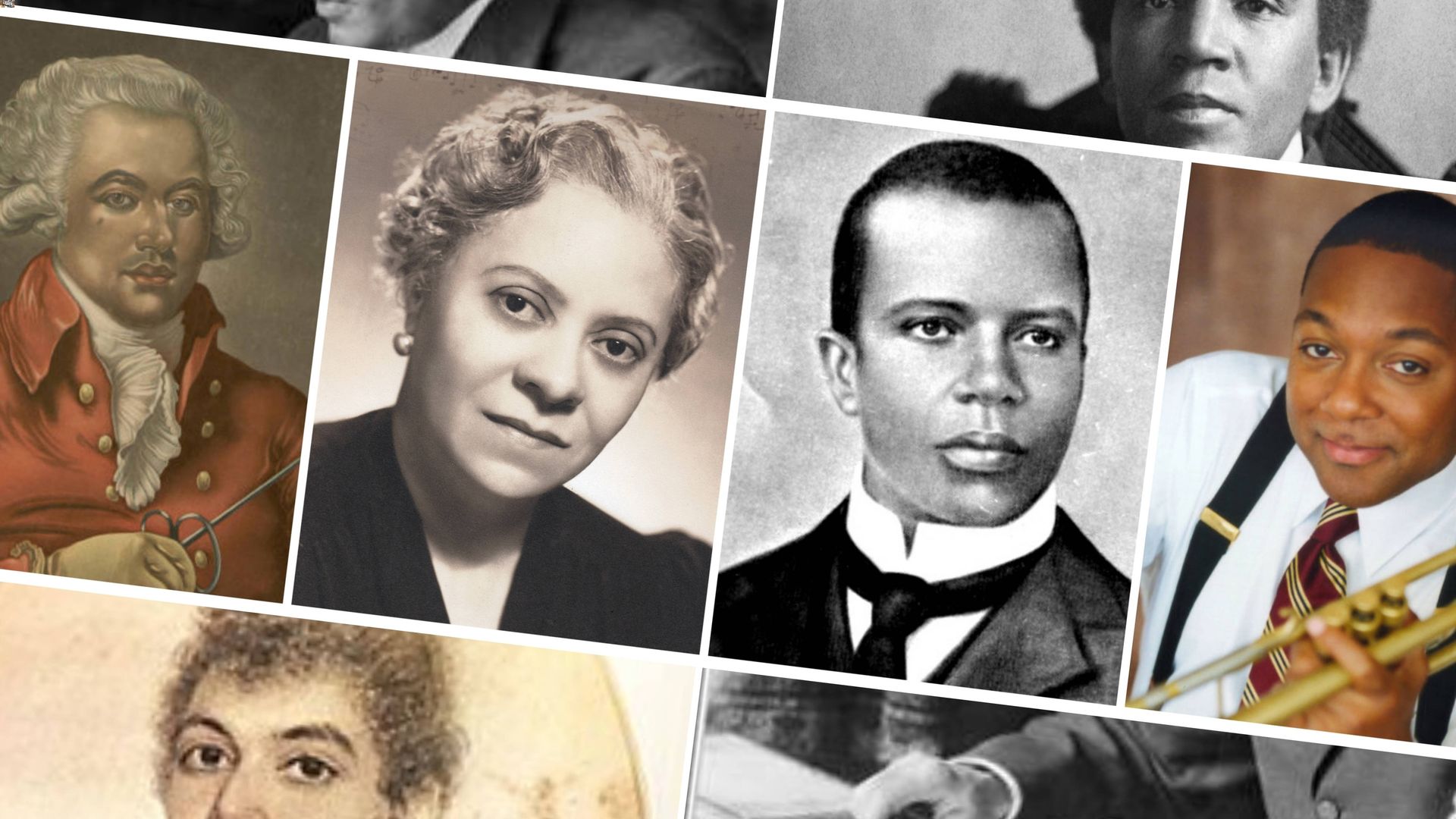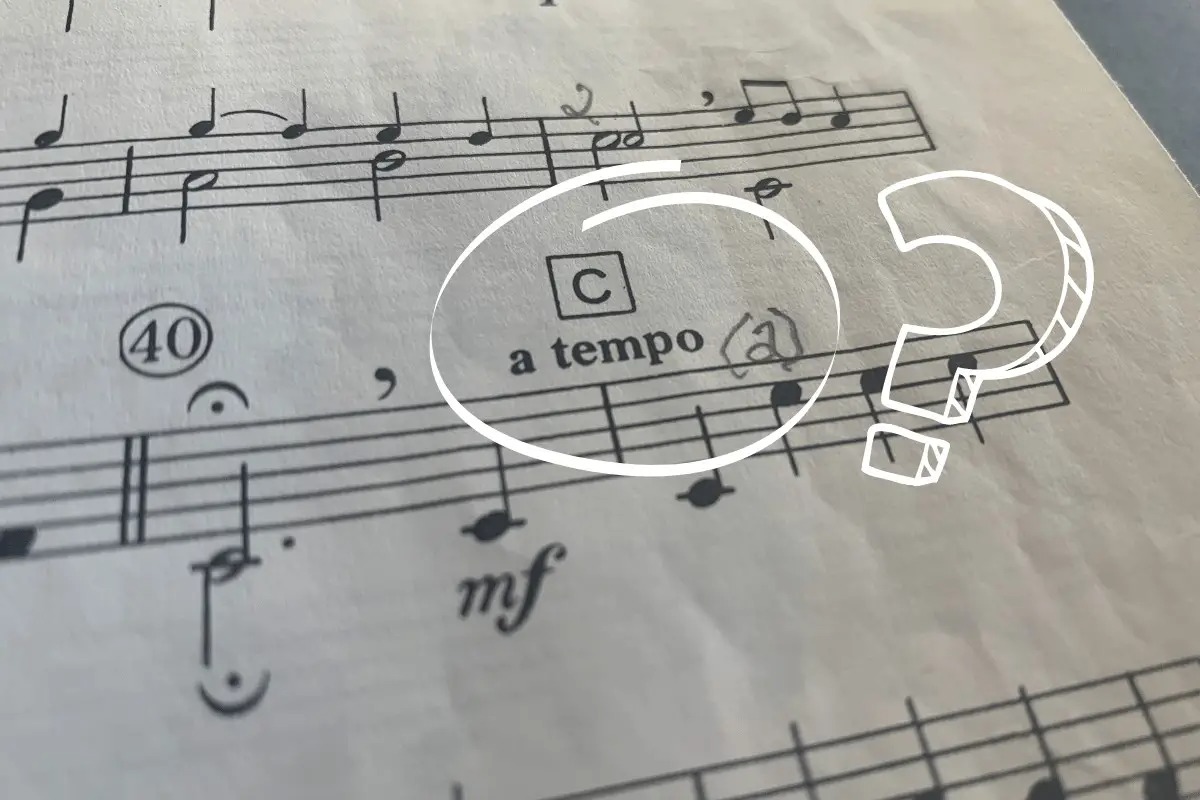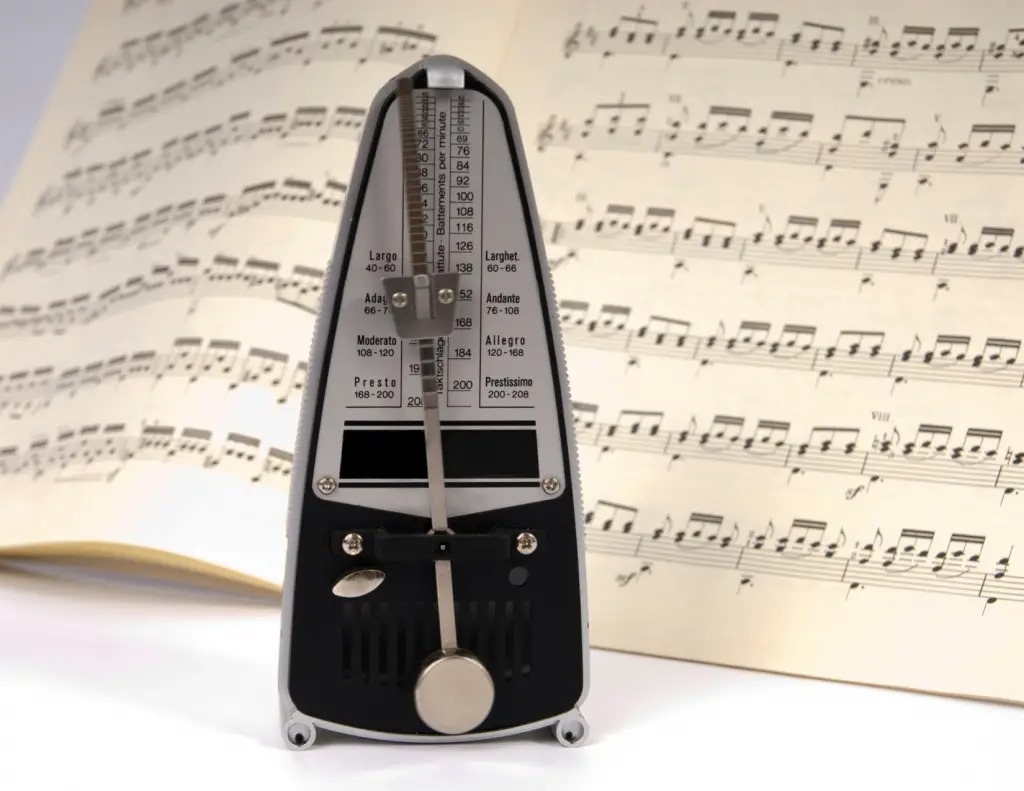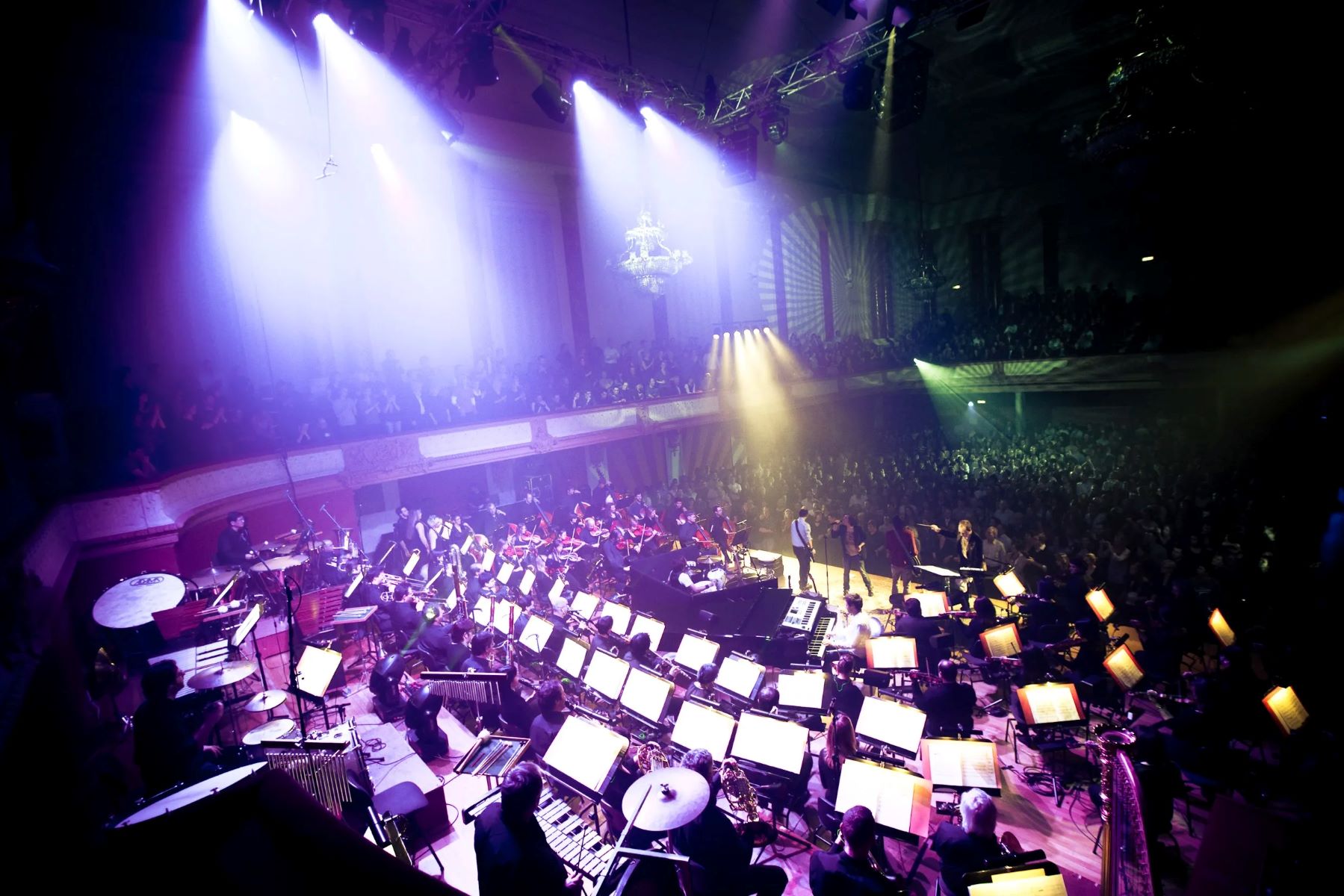Home>Production & Technology>Tempo>How Tempo Affects Music


Tempo
How Tempo Affects Music
Modified: January 22, 2024
Discover how the tempo of music influences its overall mood and energy. Explore the different effects and emotions created by varying tempos.
(Many of the links in this article redirect to a specific reviewed product. Your purchase of these products through affiliate links helps to generate commission for AudioLover.com, at no extra cost. Learn more)
Table of Contents
Introduction
Tempo is a fundamental element of music that plays a crucial role in shaping the overall feel and mood of a composition. Whether it’s a fast-paced energetic beat that gets your adrenaline pumping or a slow and soothing rhythm that evokes a sense of tranquility, tempo sets the pace and rhythm for music.
Understanding tempo and its impact on music can provide valuable insights into how music affects our emotions, influences our perception, and even affects our physical responses. From classical symphonies to modern pop hits, tempo has a significant influence on the way we experience and interpret music.
In this article, we will explore the concept of tempo, its relationship with mood, and how it varies across different musical genres. We will delve into the psychology behind tempo in music, examine the role it plays in performance styles, and explore some experimental studies that shed light on its effects. Additionally, we will discuss the use of tempo changes within musical compositions and the impact they have on the listener.
Whether you are a music enthusiast, a musician, or simply curious about the inner workings of music, this article will provide you with a better understanding of the fascinating role that tempo plays in shaping the music we love.
What is Tempo?
Tempo, in music, refers to the speed at which a piece of music is played or the rate at which the beats occur. It is a fundamental aspect of rhythm and serves as the backbone for a musical composition. Tempo is usually indicated at the beginning of a piece of sheet music through Italian terms such as “Allegro” (fast), “Andante” (moderate tempo), or “Largo” (slow).
Tempo is measured in beats per minute (BPM), which indicates the number of beats that occur within one minute. For example, a tempo of 120 BPM means there are 120 beats in one minute. The tempo sets the pace and energy level of a piece, influencing how it is performed and how it is perceived by the listener.
Tempo serves as an essential framework for musicians to synchronize and maintain a consistent rhythm throughout a performance. It provides a sense of structure and helps musicians stay in sync with each other. Additionally, tempo acts as a guide for listeners, enabling them to anticipate the rhythm and follow along with the music.
While tempo primarily refers to the speed of a piece, it can also encompass other elements such as rhythmic patterns and the overall feel of the music. Fast tempos often create a sense of excitement, energy, and urgency, while slower tempos can evoke emotions like calmness, relaxation, or sadness.
It is important to note that tempo can vary within a piece of music. Composers often incorporate tempo changes to add dynamics and create contrast within their compositions. These changes in tempo can be sudden or gradual, providing a diverse range of emotional experiences for the listener.
Overall, tempo is an essential element in music that sets the pace, rhythm, and emotional tone of a composition. It plays a vital role in conveying the intended mood and energy of a piece, providing structure for musicians and enhancing the listening experience for music enthusiasts.
The Role of Tempo in Music
Tempo plays a significant role in shaping the overall character and impact of a piece of music. It affects the way we perceive and experience a composition both emotionally and physically. Here are some key aspects of how tempo influences music:
- Setting the Mood: Tempo is closely linked to the mood and emotional tone of a musical composition. Faster tempos tend to create a sense of energy, excitement, and urgency, while slower tempos evoke feelings of calmness, introspection, or melancholy. For example, a fast tempo can be found in genres like rock, pop, or dance music, where the goal is to get the listener moving and energized, while a slow tempo is often associated with ballads or introspective pieces.
- Driving the Rhythm: Tempo serves as the foundation for the rhythmic structure of a piece. The speed at which the beats occur establishes the groove and pulse of the music, providing a framework for other musical elements to build upon. The rhythm section, including drums and bass, relies heavily on the tempo to maintain a cohesive and steady beat throughout the performance.
- Affecting Musical Interpretation: The tempo chosen for a piece can significantly impact the way it is performed and interpreted by musicians. Different tempos can evoke distinct stylistic approaches and performance techniques. For instance, a fast tempo in a classical composition might require precision and technical prowess, while a slow tempo allows for more expressive and emotive playing.
- Enhancing Dynamics: Tempo changes within a composition can create contrast and dynamics. Gradual or abrupt tempo shifts can heighten the emotional impact of a piece, signaling shifts in mood or intensity. These variations in tempo serve as important musical devices that keep the listener engaged and prevent the music from becoming monotonous.
- Matching Lyrics and Melodies: The tempo of a song often aligns with the lyrical content and melodic structure. A faster tempo may be chosen to convey energy and excitement in lyrics that are upbeat and catchy, while a slower tempo can enhance the emotional depth of introspective or heartfelt lyrics.
The role of tempo in music is multi-faceted, influencing the mood, rhythm, interpretation, dynamics, and overall impact of a composition. It is a critical element that guides the emotional and physical experience of both performers and listeners, making it an essential aspect of music production and appreciation.
How Tempo Affects the Mood of Music
Tempo is a powerful tool that composers and musicians use to evoke specific emotions and set the mood of a piece of music. The speed at which a piece is played has a direct impact on how it is perceived and the emotional response it elicits from listeners. Here are some ways in which tempo affects the mood of music:
- Energy and Excitement: Fast tempos, such as those found in upbeat dance or rock songs, create a sense of energy, excitement, and liveliness. The rapid pace activates our senses, making us feel energized and ready to move. This type of tempo is often associated with positive and uplifting emotions.
- Calming and Soothing: On the opposite end of the spectrum, slow tempos evoke a sense of calmness, relaxation, and tranquility. Slower songs, like ballads or soft lullabies, often use a gentle tempo to create a soothing and peaceful atmosphere. These tempos can help alleviate stress and promote a sense of serenity.
- Sadness and Melancholy: Some tempos, particularly slow and moderate ones, can evoke emotions of sadness, sorrow, or longing. In these cases, the pacing of the music allows for a more contemplative and introspective experience. This is often found in slower ballads or melancholic pieces where the tempo creates space for reflection and emotional depth.
- Epic and Intense: Certain genres, such as film scores or epic orchestral compositions, utilize a fast tempo to create a sense of grandeur, intensity, and excitement. These tempos, often accompanied by powerful instrumentation and dynamic performances, heighten the emotional impact of the music and contribute to a sense of awe and majesty.
- Tension and Suspense: Tempo can also be used to create suspense and tension in music. By using a medium tempo along with specific rhythmic patterns or repeated motifs, composers can create an anticipatory atmosphere that keeps the listener on the edge of their seat. This technique is commonly employed in thriller or suspenseful movie soundtracks.
It’s important to note that tempo alone is not the sole determinant of the mood of a piece of music. Other musical elements such as melody, harmony, and instrumentation also contribute to the overall emotional character. However, tempo acts as a foundational element that guides the emotional trajectory and sets the tone for the composition.
By carefully selecting and manipulating tempo, composers and musicians have the power to elicit specific emotional responses from their audience. From excitement and energy to calmness and introspection, tempo plays a crucial role in shaping the mood and emotional landscape of music.
Tempo and Musical Genre
Tempo is one of the defining characteristics that differentiate musical genres from one another. Different genres have distinct tempos that help shape their unique styles and create a specific musical atmosphere. Here are some examples of how tempo is related to various musical genres:
- Rock and Pop: These genres are often associated with faster tempos, ranging from moderate to fast-paced beats. The energetic and upbeat nature of rock and pop music is enhanced by the use of faster tempos, contributing to the excitement and catchy melodies that are characteristic of these genres.
- Ballads and Slow Jams: In contrast to rock and pop, ballads and slow jams are characterized by slower tempos. These genres often prioritize melodic depth and emotional expression, which is supported by the gentle and contemplative pacing. The slower tempo allows for more nuanced vocal performances and emphasizes the heartfelt lyricism.
- Dance and Electronic: Dance music and electronic genres typically feature fast tempos to encourage movement and create an energetic atmosphere. The high BPM (beats per minute) of these genres sets a rapid pace that drives the energetic beats and pulsating rhythms, making them ideal for club environments and parties.
- Jazz and Blues: Jazz and blues music encompass a range of tempo variations, but they often incorporate slower and moderate tempos. These genres focus on improvisation, emotional expression, and soulful performances, which are enhanced by the pacing. The steady tempo allows musicians to explore intricate melodies and express the unique character of these genres.
- Classical and Orchestral: Classical music covers a wide range of tempos, from slow movements to lively compositions. However, there is often a strong emphasis on precise and controlled performances. Orchestral pieces, symphonies, and concertos utilize a variety of tempos to convey different moods and emotions, showcasing the versatility of classical music.
While these examples highlight general associations between genres and tempo, it is important to note that there is always room for experimentation and hybridization within music. Artists often blend genres and incorporate a variety of tempos to create unique and innovative sounds.
The relationship between tempo and musical genre is dynamic and evolving, as new genres and subgenres continue to emerge. Tempo, along with other musical elements, plays a crucial role in defining the characteristics, styles, and emotions associated with different genres, contributing to the rich diversity of the musical landscape.
The Psychology Behind Tempo in Music
Tempo in music has a profound impact on our psychological and emotional responses. The pace at which a piece is played directly influences our mood, cognition, and even physiological reactions. Here are some key psychological aspects behind the effect of tempo in music:
- Emotional Resonance: The tempo of a piece of music can elicit specific emotional responses, as it taps into our innate ability to associate rhythm with emotions. For example, a fast tempo can induce feelings of excitement and joy, while a slow tempo can evoke introspection or sadness. This emotional resonance arises from our brain’s ability to process rhythmic patterns and connect them to corresponding emotional states.
- Rhythmic Entrainment: Tempo has the power to synchronize and entrain our body’s movements and internal rhythms. This phenomenon is known as rhythmic entrainment. When we listen to music with a strong beat, our body naturally wants to align with it, resulting in foot-tapping, head-nodding, or even full-body movement. This synchronization between music and movement reinforces our emotional connection to the music and intensifies our engagement with the piece.
- Cognitive Processing: Tempo can impact our cognitive processes, such as attention, memory, and creativity. Research has shown that faster tempos can enhance cognitive performance and increase arousal levels. Additionally, the rhythmic structure provided by tempo can assist our brain in organizing and processing information more efficiently.
- Physiological Responses: Tempo can elicit physiological responses in our bodies, including changes in heart rate, respiration, and even hormone levels. Faster tempos tend to increase physiological arousal, leading to heightened heart rates and elevated energy levels. Slower tempos, on the other hand, can induce relaxation and a decrease in physiological arousal.
- Music and Flow State: Tempo is closely linked to the concept of flow state, a state of heightened focus, creativity, and immersion. When the tempo of music aligns with our abilities and challenges, it can facilitate the flow state, enhancing our concentration and productivity. This is why certain tempos are commonly found in activities like studying, working, or exercising to optimize performance and engagement.
The underlying psychological processes triggered by tempo in music highlight the intricate connection between rhythm and human experiences. Understanding these psychological responses to tempo allows musicians, composers, and music producers to craft music that resonates deeply with listeners and enhances their emotional and cognitive engagement.
Ultimately, the psychology behind tempo in music highlights the powerful influence that rhythm and pace have on shaping our thoughts, emotions, and physical responses. Whether it’s uplifting our spirits, calming our minds, or fueling our energy, tempo plays a key role in the psychology of music.
Tempo and Performance Style
Tempo not only shapes the mood and emotional impact of a piece of music but also plays a crucial role in defining the performance style and interpretation of the music. Different performance styles can emerge based on the chosen tempo, allowing musicians to express their individuality and creativity. Here are some ways in which tempo influences performance style:
- Interpretation and Expression: The tempo chosen by a musician can greatly affect the interpretation and expression of a musical piece. Even slight variations in tempo can convey different nuances and emotions within the music. Musicians have the freedom to play with tempos, adjusting the pace to emphasize certain phrases, enhance the dynamics, or add their own personal touch to the performance.
- Technical Demands: Tempo can pose different technical challenges for musicians. Faster tempos require precise coordination and dexterity, especially for instruments with complex fingerings or intricate rhythmic patterns. On the other hand, slower tempos allow musicians to focus on creating a rich tone, exploring phrasing, and showcasing their control and expressiveness.
- Genre-specific Styles: Different genres have their own performance styles, often associated with specific tempos. For example, in jazz music, improvisation and syncopation play a significant role, and musicians may vary the tempo to create tension and excitement. In contrast, in classical music, adhering to the composer’s indicated tempo is important for preserving the integrity of the piece.
- Collaborative Performances: Tempo serves as a critical factor in coordinating and maintaining synchronization when performing with an ensemble or band. A consistent tempo allows musicians to play together as a cohesive unit, ensuring that all instruments and voices are in harmony. Tempo acts as a guide for ensemble members, facilitating communication and the creation of a unified musical experience.
- Improvisation and Adaptability: When playing in an improvisatory style or responding to a spontaneous musical moment, musicians often adjust the tempo on the fly. This adaptability allows them to respond to the energy and atmosphere of the performance, engaging in musical conversations and creating unique expressive moments.
Ultimately, tempo and performance style are closely intertwined, with each influencing and complementing the other. Musicians are not bound by a fixed tempo but have the flexibility to explore different interpretations and performance styles to bring out the essence of a composition.
By embracing and experimenting with various tempos, musicians can unleash their creativity, inject their personality into their performances, and contribute to the diversity and richness of musical interpretations.
Experimental Studies on the Effects of Tempo
Over the years, numerous experimental studies have been conducted to explore the effects of tempo on various aspects of human perception, cognition, and emotions. These studies provide valuable insights into the ways in which tempo influences our responses to music. Here are some key findings from experimental research on the effects of tempo:
- Emotional Perception: Studies have consistently shown that tempo has a direct impact on our emotional perception of music. Faster tempos tend to be associated with positive emotions such as happiness and excitement, while slower tempos evoke feelings of sadness or peacefulness. These observations suggest a strong connection between the rhythmic structure provided by tempo and our emotional responses.
- Attention and Memory: Tempo also plays a role in our attention and memory processes. Research indicates that faster tempos can enhance attention and increase arousal levels, leading to improved cognitive performance. Additionally, the rhythmic regularity facilitated by tempo is thought to aid in memory encoding and retrieval, making music with a steady beat easier to remember.
- Movement and Physical Response: Tempo has been found to influence our motor responses and physical movements. When listening to music with a strong beat, our body naturally tends to synchronize and move in time with the tempo. This rhythmic entrainment highlights the close connection between music, tempo, and our motor system, enhancing our engagement and connection with the music through physical responses.
- Perceived Time: Studies have shown that tempo can affect our perception of time. Faster tempos tend to make time feel like it is passing more quickly, while slower tempos can give the impression of time moving more slowly. This phenomenon has implications for our subjective experience of music, as well as its potential applications in areas such as time perception research and therapeutic interventions.
- Emotional Regulation: Tempo has the potential to modulate our emotional states and assist in emotional regulation. Research suggests that individuals can use music with specific tempos to either enhance or regulate their current mood. For example, listening to faster music can enhance positive emotions and energy levels, while slower music can help reduce stress and induce relaxation.
Experimental studies provide strong evidence for the psychological and physiological effects of tempo on human experiences. These findings underscore the profound influence that tempo has on our emotions, attention, memory, movements, and subjective perception of time. Understanding these effects can help musicians, composers, and music therapists harness the power of tempo to elicit specific responses and create emotionally impactful musical experiences.
The Use of Tempo Changes in Music
Tempo changes, also known as tempo fluctuations or accelerandi/ritardandi, are deliberate shifts in the speed or rate of a musical composition. These changes add depth, contrast, and emotional impact to the music, guiding the listener through a dynamic and engaging musical journey. Here are some ways in which tempo changes are used in music:
- Creating Expressive Phrasing: Tempo changes can be used to shape the phrasing and dynamics of a musical piece. By slowing down or speeding up the tempo at strategic points, musicians can add emphasis, highlight certain melodic lines, or convey emotional intensity. This technique allows for greater expressiveness and the ability to communicate the intended musical narrative.
- Building Tension and Release: Tempo changes are often employed to create tension and release within a composition. A sudden increase in tempo can heighten the energy and anticipation, while a deceleration can provide a sense of relief or resolution. These fluctuations keep the listener engaged and provide significant moments of impact and release throughout the music.
- Enhancing Musical Transitions: Tempo changes can be used to signal transitions between different sections or movements within a piece. Gradual accelerandos or ritardandos help smoothly transition from one musical segment to another, creating a seamless flow in the music. These changes can also serve as a musical cue for performers, allowing them to navigate complex compositions with precision.
- Highlighting Musical Genres and Styles: Tempo changes are instrumental in distinguishing and conveying specific genres and styles of music. In genres like jazz, funk, or Latin music, musicians often incorporate tempo changes as part of their improvisation and stylistic expression. These fluctuations add rhythmic complexity and contribute to the dynamic nature of these genres.
- Captivating Listener Attention: Tempo changes capture the listener’s attention and prevent musical monotony. By introducing variations in tempo, musicians create surprises and challenges for the listener, making the music more engaging. These changes force the listener to actively participate and follow the musical journey, enhancing their overall enjoyment and connection with the piece.
Tempo changes are a valuable tool for composers, arrangers, and performers to add depth, variety, and emotional impact to their music. Whether through gradual accelerations or sudden shifts, tempo changes help shape the narrative of a musical composition, creating moments of tension, release, emphasis, and stylistic expression. The strategic utilization of tempo changes ensures that the music remains dynamic, intriguing, and resonates deeply with the listener.
Conclusion
Tempo is a fundamental element of music that significantly influences our perception, emotional response, and overall experience of a composition. From setting the mood and driving the rhythm to shaping performance styles and evoking specific emotions, tempo plays a pivotal role in the world of music.
We have explored the concept of tempo, understanding its meaning and measurement in beats per minute. We have delved into how tempo affects the mood of music, highlighting its ability to elicit a range of emotions from excitement and energy to calmness and introspection. Furthermore, we have discussed the relationship between tempo and musical genres, as well as its impact on performance styles and interpretation.
The psychology behind tempo has also been explored, revealing the intricate connection between tempo, emotions, attention, memory, and physical responses. Experimental studies have provided valuable insights into the psychological and physiological effects of tempo on human perception and cognition. Findings have demonstrated the links between tempo, emotional regulation, movement, and our perception of time.
Additionally, we have discussed the use of tempo changes in music, recognizing their power in creating expressive phrasing, building tension and release, enhancing transitions, and captivating listener attention. Tempo changes add depth, contrast, and excitement to musical compositions, allowing for a dynamic and engaging listening experience.
In conclusion, tempo is a vital element in music that goes beyond mere speed. It nuances our emotional experience, guides our attention, influences our movements, and shapes the overall aesthetic and expressive qualities of music. By understanding and utilizing the power of tempo, musicians, composers, and music enthusiasts can create impactful and memorable musical experiences that resonate with the human spirit.











